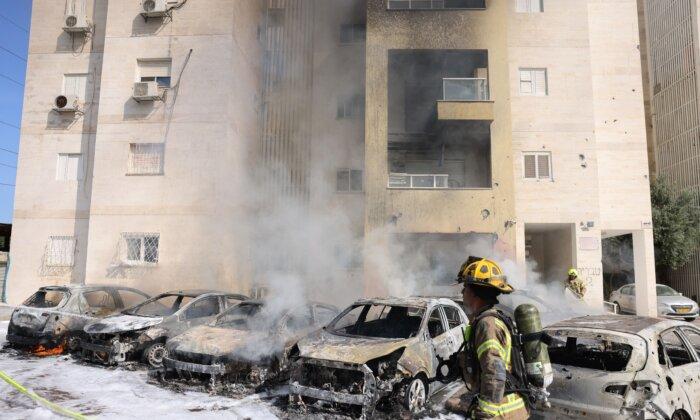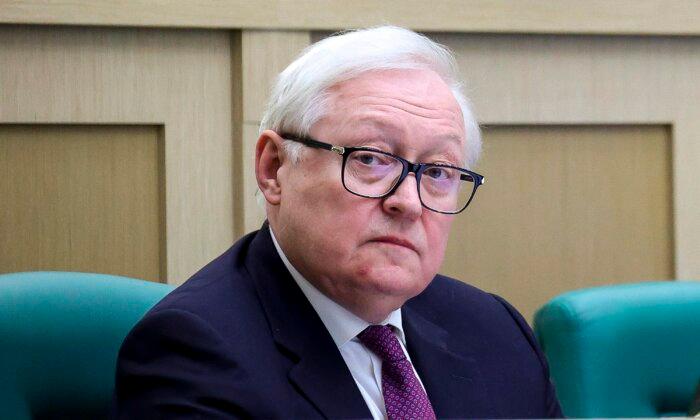Israeli helicopter gunships have struck positions in southern Lebanon, according to an Israeli army spokesman.
The move has prompted concern about a region-wide conflict two days after the Gaza-based militant faction Hamas staged a massive cross-border raid into Israel.
“Helicopters of the Israel Defense Forces are currently delivering strikes in Lebanese territory,” an Israeli military spokesman said in an Oct. 9 statement posted on social media.
He didn’t provide details regarding the location or nature of designated targets in Lebanon.
“Israelis living in towns near the border with Lebanon are urged to take shelter at home,” the spokesman added.
Hours earlier, Israel’s military said ground forces backed by helicopters had killed an unspecified number of armed “infiltrators” who had entered the country from southern Lebanon.
Israeli troops “killed a number of armed suspects that infiltrated into Israeli territory from Lebanese territory,” the military said in a statement, adding that gunships were now “striking the area.”
The strikes were carried out near the Israeli town of Adamit, which sits near the Lebanese border, according to Israel’s Army Radio.

Israel invaded southern Lebanon in 1978, 1982, and 2006.
In the most recent conflict, Israeli forces withdrew from the country after fierce fighting with Lebanon’s Hezbollah Shiite militia. Hezbollah is heavily supported by Iran—Israel’s archfoe in the region.
A Hezbollah spokesman has since denied that the group had staged any cross-border operations into northern Israel.
Hezbollah has, however, voiced its support for the deadly cross-border incursion into Israel by Hamas on Oct. 7. On Oct. 8, Hezbollah said it had shelled positions in the disputed Shebaa Farms border region “in solidarity” with the Palestinian people.
Israel has controlled Shebaa Farms since the 1967 Arab-Israeli War. According to Lebanon and Syria, the region—only 15 square miles—is Lebanese territory.
Mounting Death Toll
Israel’s strikes on Lebanon come two days after Hamas, a Palestinian militant faction that governs the Gaza Strip, initiated a multi-pronged assault into Israeli territory that has left more than 900 Israelis dead.Several U.S. nationals were reportedly among those killed in the opening phase of the cross-border assault, which began with hundreds of rockets fired at Israel from Gaza.
According to Israeli sources, Hamas also succeeded in capturing more than 130 Israeli hostages. They may be exchanged for hundreds of Palestinian prisoners languishing in Israeli jails.
Hamas says the attack was a response to Israel’s harsh treatment of Palestinians in the West Bank, which is run by the Palestinian Authority, and Israel’s 16-year-old blockade of Gaza.
The militant group also says the attack, which it has dubbed “Operation Al-Aqsa Flood,” was a response to recent incursions by Jewish settlers into Jerusalem’s Al-Aqsa Mosque compound.

Muslims regard the Al-Aqsa Mosque as the third holiest site in Islam.
Meanwhile, Israeli troops are still struggling to reassert control over several Israeli border towns that were reportedly overrun by Hamas militants. On Oct. 9, an Israeli military spokesman said Israeli forces had retaken most of these areas but also said that sporadic fighting continues.
Israel has vowed to respond to the cross-border assault by destroying Palestinian militant factions based in Gaza.
“The price the Gaza Strip will pay will be a very heavy one that will change reality for generations,” Israeli Defense Minister Yoav Gallant said.
On Oct. 9, Israel announced an unprecedented callup of 300,000 army reservists, suggesting plans may be underway for a full-scale invasion of the Gaza Strip.
16-Year Blockade
Since Hamas started its surprise assault on Oct. 7, Israeli military aircraft have continued to pound the Gaza Strip, which is home to some 2.3 million Palestinians.According to Gaza’s health ministry, more than 560 Palestinians have been killed—and 2,800 injured—in retaliatory strikes by Israel across the coastal strip.
The Israeli military has confirmed that it struck more than 500 targets linked to Hamas and Islamic Jihad in overnight raids.
Since 2007, the small coastal enclave—about 225 square kilometers (almost 87 square miles)—has remained under a draconian blockade by both the Israeli and Egyptian authorities.
Mr. Gallant has announced plans to ratchet up the 16-year-old blockade to prevent food and fuel from reaching the Hamas-run territory.
U.N. Secretary-General Antonio Guterres warned that such a move would cause Gaza’s “already dire” humanitarian situation to “deteriorate exponentially.”
Hamas’s cross-border assault is the deadliest incursion into Israel since 1973, when Egypt and Syria launched a surprise attack on the Jewish state in an effort to recapture territory lost earlier.
In 2014, Israel carried out a massive, six-week assault on the Gaza Strip, which included a wide-ranging ground offensive involving hundreds of troops.
More than 2,000 Palestinians—and scores of Israelis—were killed in that conflict, which led to the collapse of U.S.-backed peace talks between Israel and the Palestinian Authority.







